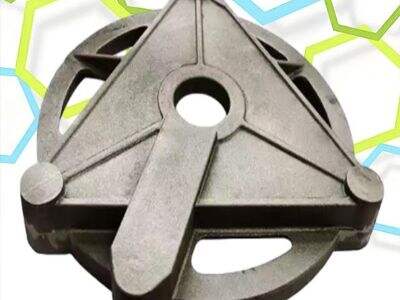This process is called cast iron casting and it is used to create many products cast in iron. This process has been used for many years; It is a well-known technique for manufacturing. LF has used this process to create things you use daily like pots and pans, and even some car parts. Let’s examine the cast iron casting process and explore its importance.
The Evolution of Cast Iron Molding:
The history of cast iron casting dates back centuries, to the 7th century BC. The earliest use of Cast Iron rut that has been found was in ancient China. This practice eventually spread to Europe and the Americas over the period of several hundred years. Around the late 1800s, with the Industrial Revolution gaining pace, cast iron products started to be made in factories on a mass scale. This was crucial because it meant faster production and access to these things for more people. Even today cast iron is used widely in many products around us.
Types of Molds In Cast Iron Casting
Molds are very critical parts of the cast iron casting process. You need different molds to make different types of products, and the mold used can change the shape and size of the final product. Some common types of molds used in the casting of the gray cast iron castings.
The sand Molds: These are made from a mixture of the sand and special binder material. However, there are various types of molds used in the casting process, out of which sand molds are the most common ones as they are easy to manufacture and have a common shape.
Die casting: This mold type is for making a large number of small pieces rapidly, such as car and toy items. Die casting lets you shape this in exact dimensions.
Shell Casting — More complex shapes are made using shell molds. This makes them good for high-volume production and very high-volume production.
The Sand Casting Process for Cast Iron in 10 Steps:
Sand casting is very common type of currently casting being used in factories. It is a fairly straightforward process and although there are some key steps:
Pattern Making The first step in the casting is the making of the pattern of product to be cast. This type of mold serves as a model for making the molds.
Sand Preparation: The sand is then combined with binder material to make the sand sticky. Insert this mixture into a mold if desired, or use a shape holder to keep it from flattening in the jar.
Step 2: Mold Making: A mold is made using the pattern from step 1. This is a critical step, because if the flow is wrong, it needs to be correctly molded for the product to be correct.
Melting the Cast – The cast iron is melted in a specialized furnace Iron has to be under extreme heat to melt it down into liquid state.
Pouring: Upon melting the iron, it is carefully poured into the mold from Step 3. Pouring too quickly can cause air pockets in the mold, esspecially in large pour.
Once the molten iron is in the mold, it requires time to cool and solidify. This is where the iron assumes the mold shape.
Shake-out: The mold is broken apart after the iron has cooled and hardened to extract the newly formed piece.
IT English Melting and Pouring Work – Replacement or Not?
Melting and pouring are since crucial process in the casting process. How well these steps are done matters a lot to the quality of the final product. Some of the methods that are being employed are:
Melt the iron in Cupola furnace: This is special furnace for iron melting. This helps to achieve higher temperatures than would otherwise be possible, and assures that the iron used will be fully molten.
Pouring Technique: The method of pouring hot iron into the mold is also very significant. It must be runny enough to flow and fill every part of the mold, avoiding air bubbles or voids.
At what temperature does Iron get solidified : The cooling rate of the iron is crucial too. To ensure that the final product has no holes and defects, it must solidify well, and thus it needs to cool at the right speeds.
Processes for Finishing Cast Iron Products:
Once the casting is complete, the products undergo multiple finishing processes. These process steps are required to ensure quality: they will be essential to pass the quality test. Some of the processes of finishing are:
Machining: So the product is cut, drilled, and ground to form the required shape and size. It takes some of the edge off.
Paint: After shaping the product, it may be painted or coated. This protects the product against rust and other damages, so that it has a longer life.
Heat Treatment: Heat treatment helps in enhancing strength and hardness in cast iron. This is where you heat the iron and then cool it in a way that does changes its properties.
Finally, starting from products needing aesthetic appeal to numerous other applications, cast iron casting is an age-old method employed since years to establish diverse products. LF has mastered this art and keeps making quality, long lasting stuff. It is vital to products that are stronger, more reliable, and durable, that we understand the types of molds, the sand casting process, and the melting and pouring techniques, and then the finishing processes. We hope this introduction has given you a better idea of cast iron casting and why it plays a crucial role in manufacturing today.

 EN
EN
 CS
CS
 DA
DA
 NL
NL
 FI
FI
 FR
FR
 DE
DE
 EL
EL
 IT
IT
 JA
JA
 KO
KO
 PL
PL
 PT
PT
 RU
RU
 ES
ES
 TL
TL
 ET
ET
 TH
TH
 MS
MS



